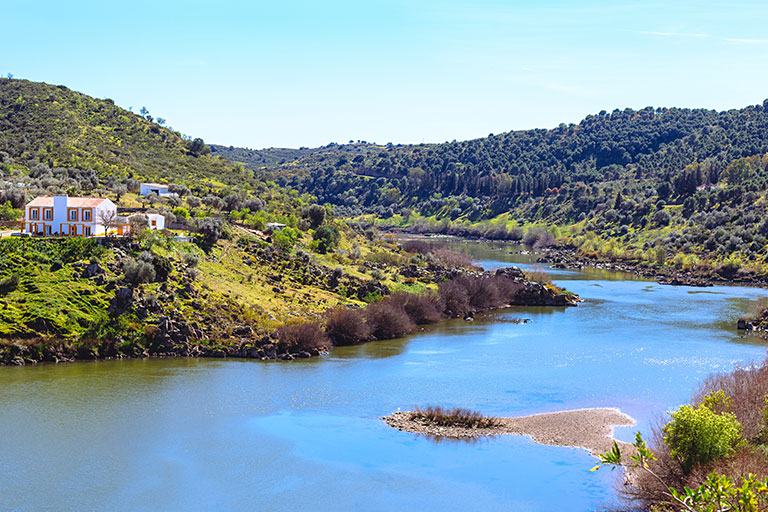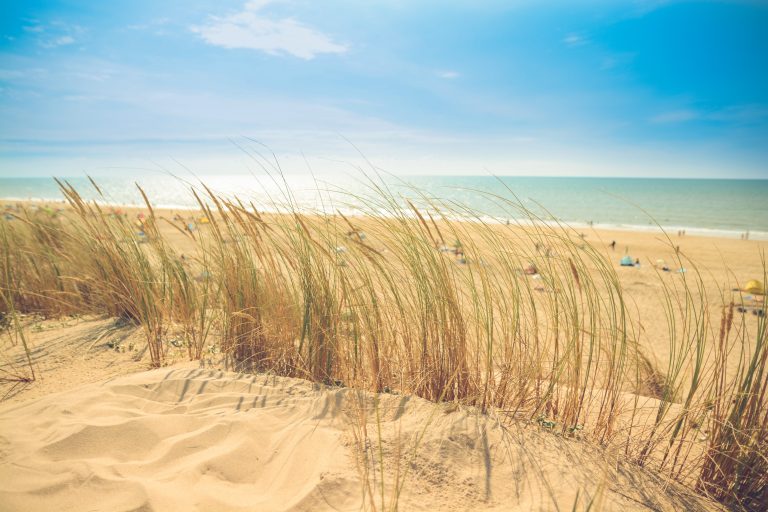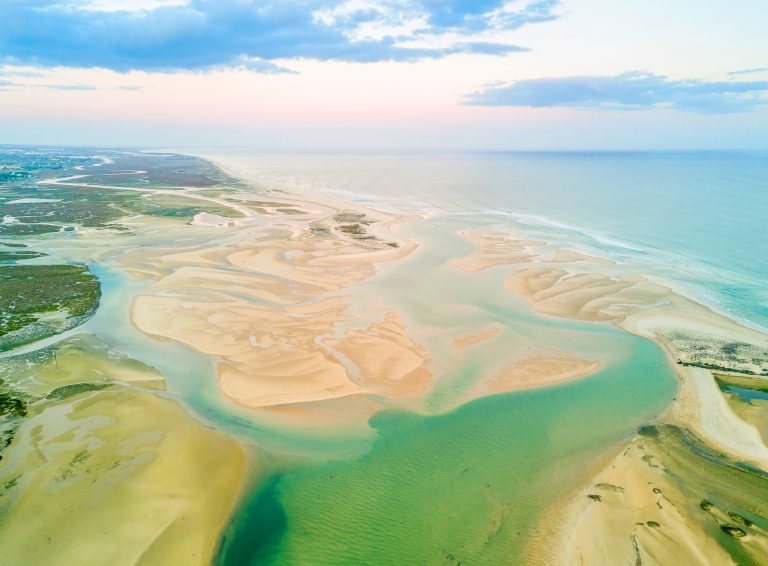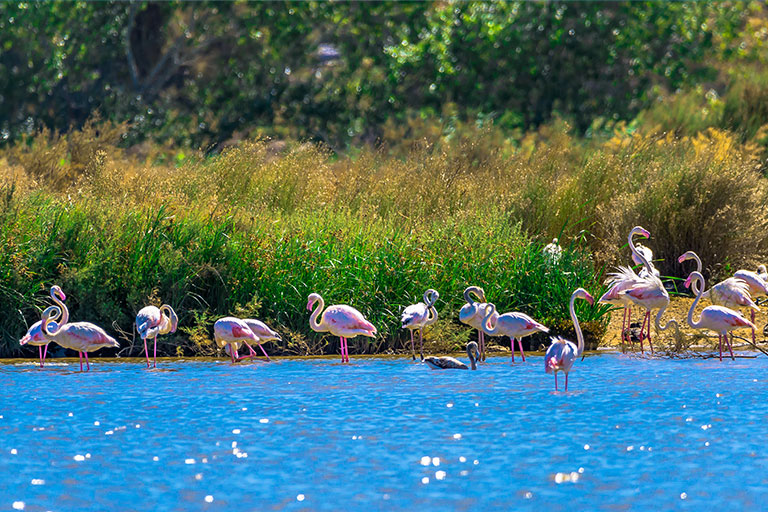Natural Heritage
“
Look deep into nature, and then you will understand everything better“

Guadiana River
The Guadiana River, forming a natural frontier where Portugal meets Spain, became the official border between those two countries after the Christian occupation. During the Roman period, the mining resources of the region were exploited and transported along the river, which covers a length of 829km. Although it became an important port of entry for sea fishing boats to supply the canneries by the end of the 20th century, nowadays you’re most likely to gaze upon the banks of the Guadiana River whilst on a river cruise. Whether you’re marveling at the natural world or bonding with the welcoming people who live here, you will create memories that will last forever.
The Beaches
From the Guadiana estuary to Caçela Velha, the most westerly municipality of Vila Real de Santo António, you will find a 12km-long sandy beach with a calm and, for Portugal, uniquely warm sea. The vast beach, very close to The Grand House Beach Club, is the perfect spot to spend a relaxing day in Grand style. If you’re full of energy, walk along the undulating curves of the dunes, sheltered by the shadows of the pine forests and Ria Formosa’s canals. At the end of the beach you’ll find the magical Caçela Velha Peninsula, just inside the Ria Formosa, which is accessible by boat; remarkably, on one side is the Ria channel and, on the other, the infinite ocean.


Ria Formosa
The Ria Formosa Natural Park is a complex lagoon system with a huge diversity of fauna and it is in a permanent state of flux, due to the influence of winds, currents and tides. It stretches along 60km of coast from Ancão (Municipality of Loulé) to Manta Rota, part of the municipality of Vila Real de Santo António. Together with two peninsulas and five barrier islands (Ancão Peninsula, Island of Barreta or Deserta, Island of Culatra, Island of Armona, Island of Tavira, Island of Cabanas and Peninsula of Cacela) it was classified in 1987 as a Natural Park
Natural Reserves
Vila Real de Santo António is flanked by two Natural Reserves, ideally suited to hiking, biking and bird watching. A 3km-long pine forest that connects Vila Real de Santo António and Monte Gordo takes on a protective role for this region by fixing the dune system, controlling the sea winds and providing safe harbor for the wild fauna. The forest hosts an important population of chameleon, a reptile that has here one of the last strongholds of its natural habitat. The Natural Reserve of Sapal de Castro Marim and Vila Real de Santo António is near the mouth of the River Guadiana and covers an area of 2300 hectares, consisting of salt marshes, brackish water bodies and steers which harbor a high number of fauna and flora species. As one of the areas of major ornithological interest in Portugal, this wetland is also recognized as a place of passage, wintering and nesting of many species of waterfowl.

Stay up to date
T. : +351 281 530 290 (rede fixa)
M. : +351 967 471 957 (rede móvel)
info@grandhousealgarve.com





